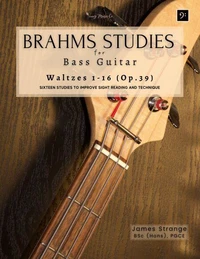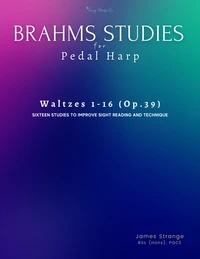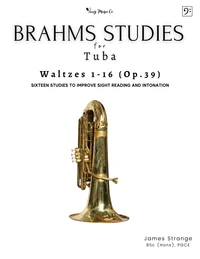Brahms Studies for Double Bass: Waltzes 1-16 (Op.39)
Par :Formats :
Disponible dans votre compte client Decitre ou Furet du Nord dès validation de votre commande. Le format ePub est :
- Compatible avec une lecture sur My Vivlio (smartphone, tablette, ordinateur)
- Compatible avec une lecture sur liseuses Vivlio
- Pour les liseuses autres que Vivlio, vous devez utiliser le logiciel Adobe Digital Edition. Non compatible avec la lecture sur les liseuses Kindle, Remarkable et Sony
 , qui est-ce ?
, qui est-ce ?Notre partenaire de plateforme de lecture numérique où vous retrouverez l'ensemble de vos ebooks gratuitement
Pour en savoir plus sur nos ebooks, consultez notre aide en ligne ici
- FormatePub
- ISBN8223688846
- EAN9798223688846
- Date de parution05/03/2024
- Protection num.pas de protection
- Infos supplémentairesepub
- ÉditeurDraft2Digital
Résumé
This selection of Brahms waltzes has been compiled from the original piano scores and arranged to be played unaccompanied by the solo double bass player. Each piece presents a study to strengthen the left hand and improve bowing technique, whilst providing a range of challenging sight reading exercises in a variety of key signatures. The pieces are varied in difficulty, with most performed in first, second, or third position, with the added opportunity to practice thumb position for more advanced players.
Suggested bowing included throughout each piece. The character of each piece allows for application of simple techniques such as staccato and legato bowing, whilst using dynamics ranging from piano to forte, applying crescendos and decrescendos, and practicing simple phrasing.
Suggested bowing included throughout each piece. The character of each piece allows for application of simple techniques such as staccato and legato bowing, whilst using dynamics ranging from piano to forte, applying crescendos and decrescendos, and practicing simple phrasing.
This selection of Brahms waltzes has been compiled from the original piano scores and arranged to be played unaccompanied by the solo double bass player. Each piece presents a study to strengthen the left hand and improve bowing technique, whilst providing a range of challenging sight reading exercises in a variety of key signatures. The pieces are varied in difficulty, with most performed in first, second, or third position, with the added opportunity to practice thumb position for more advanced players.
Suggested bowing included throughout each piece. The character of each piece allows for application of simple techniques such as staccato and legato bowing, whilst using dynamics ranging from piano to forte, applying crescendos and decrescendos, and practicing simple phrasing.
Suggested bowing included throughout each piece. The character of each piece allows for application of simple techniques such as staccato and legato bowing, whilst using dynamics ranging from piano to forte, applying crescendos and decrescendos, and practicing simple phrasing.








